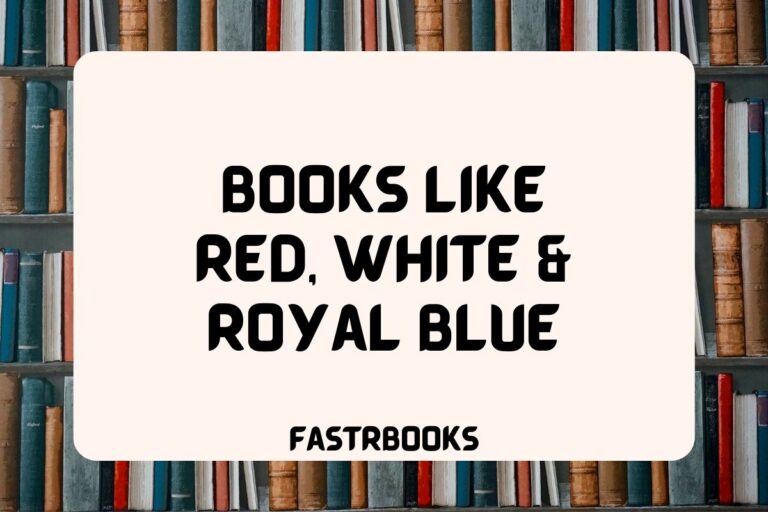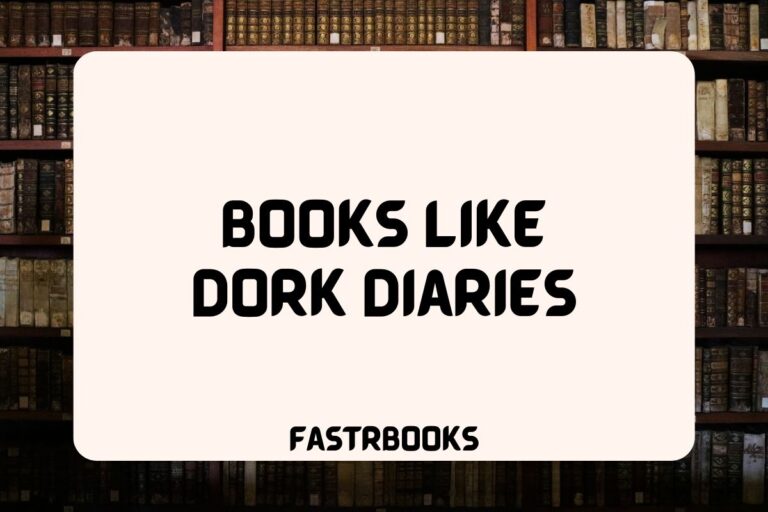10 Books Like Brave New World
Did Aldous Huxley’s “Brave New World” leave you pondering the chilling possibilities of a future controlled by technology and societal manipulation?
If you crave more thought-provoking narratives that explore similar themes, then buckle up for a thrilling journey!
This list curates some captivating reads guaranteed to ignite your imagination and challenge your perspectives, just like Huxley’s iconic masterpiece.
Books Like Brave New World
1. 1984 by George Orwell
“1984” is a dystopian novel that paints a chilling picture of a totalitarian state where Big Brother sees all, and individual freedom is crushed under the weight of government surveillance and public manipulation.
Written by George Orwell and published in 1949, it explores themes of rebellion, the importance of personal autonomy, and the dangers of unchecked government power.
The story follows Winston Smith, a low-ranking member of the ruling Party in the nation of Oceania, who secretly despises the Party and dreams of rebellion.
Major Similarities:
Like “Brave New World,” “1984” delves into the dangers of a controlled society, though it approaches these themes through the lens of surveillance and authoritarian rule rather than technological and psychological manipulation.
Both novels are cautionary tales about the loss of individual identity and freedom, the manipulation of truth, and the use of technology to enforce conformity and suppress dissent.
2. Fahrenheit 451 by Ray Bradbury
“Fahrenheit 451” presents a future American society where books are outlawed and “firemen” burn any that are found. Published in 1953, this novel by Ray Bradbury focuses on the life of Guy Montag, a fireman who becomes disillusioned with his role in suppressing knowledge and promoting ignorance.
As he begins to question his actions and the values of society, Montag seeks freedom in a world dominated by television and government censorship.
Major Similarities:
Both “Brave New World” and “Fahrenheit 451” explore themes of censorship, the suppression of dissent, and the use of technology to control society.
They highlight the consequences of relinquishing critical thinking and individuality in favor of a conformist and superficial existence. Each book serves as a warning about the potential for governments to exploit technology in the pursuit of maintaining order and control over their citizens.
3. We by Yevgeny Zamyatin
“We” is a dystopian novel that predates both “Brave New World” and “1984,” having been written in 1924 by Russian author Yevgeny Zamyatin. It describes a highly regimented future society, OneState, governed by logic and reason, where citizens have lost their individuality and live under constant surveillance.
The narrative is presented through the diary of D-503, an engineer who begins to experience emotions and thoughts that lead him to question the principles of his society.
Major Similarities:
“We” shares with “Brave New World” a portrayal of a future society where individual freedom is sacrificed for the sake of collective stability and conformity.
Both novels address the theme of resistance against a seemingly utopian but deeply oppressive society. They also explore the use of technology and strict social systems to eliminate personal identity and enforce conformity.
4. The Handmaid’s Tale by Margaret Atwood
“The Handmaid’s Tale” is set in the dystopian future of the Republic of Gilead, where a theocratic regime has taken over the United States.
Published in 1985, Margaret Atwood’s novel explores themes of subjugation, resistance, and the role of women in a patriarchal society through the eyes of Offred, a Handmaid who serves one of the regime’s leaders, bearing children for elite couples.
The novel vividly depicts the erosion of women’s rights and the use of religion to justify oppression.
Major Similarities:
Like “Brave New World,” “The Handmaid’s Tale” examines the control of society through the lens of reproductive technology and manipulation of biological roles. Both stories explore themes of autonomy, resistance, and the consequences of societal manipulation.
They depict worlds where the government exerts control over the most personal aspects of life, including sexuality, reproduction, and identity.
5. The Giver by Lois Lowry
“The Giver” is a young adult dystopian novel that centers on a society that has eliminated pain and strife by converting to “Sameness,” a plan that eradicates emotional depth from their lives.
Published in 1993, Lois Lowry’s novel follows a 12-year-old boy named Jonas, who is selected to inherit the position of Receiver of Memory, the person who stores all the past memories of the time before Sameness.
As Jonas receives these memories, he begins to question the lack of choice and emotion in his community.
Major Similarities:
Both “The Giver” and “Brave New World” share themes of controlled societies where emotions and individual histories are suppressed to maintain order and harmony.
They explore the consequences of sacrificing emotional depth and choice for the sake of a utopian ideal.
Each novel raises questions about the value of individuality and the dangers of a society that seeks to eliminate pain and suffering at the cost of personal freedom and authenticity.
6. A Clockwork Orange by Anthony Burgess
“A Clockwork Orange” is a novel set in a dystopian future society characterized by extreme youth violence and governmental control. Written by Anthony Burgess and published in 1962, it follows the story of Alex, a delinquent teenager who revels in acts of rape, violence, and theft.
The government attempts to reform him by subjecting him to an experimental psychological treatment aimed at conditioning him against violence. The novel delves into themes of free will, the ethics of psychological conditioning, and the nature of evil.
Major Similarities:
Similar to “Brave New World,” “A Clockwork Orange” explores the manipulation of individual behavior by the state, albeit through more brutal and direct methods.
Both novels question the morality of using science and psychology to control human behavior, the loss of personal freedom, and the consequences of a society that seeks to eradicate undesirable behaviors through technological and psychological means.
7. Never Let Me Go by Kazuo Ishiguro
“Never Let Me Go” is a science fiction novel that subtly introduces a dystopian world through the lives of Kathy, Tommy, and Ruth, who grow up together at an English boarding school called Hailsham.
Published in 2005 by Kazuo Ishiguro, the novel gradually unveils the dark truth about the children’s destiny and the society they live in. It addresses themes of humanity, memory, loss, and the ethical dimensions of scientific progress.
Major Similarities:
Like “Brave New World,” “Never Let Me Go” deals with the implications of scientific advancements on individual lives and society as a whole. Both novels raise profound ethical questions about the use of technology in controlling and defining the value of human life.
They share a focus on the emotional and psychological effects of living within societies that use individuals for the greater good, often at the expense of personal freedom and identity.
8. The Dispossessed by Ursula K. Le Guin
“The Dispossessed” is a novel that contrasts two societies: the anarchistic world of Anarres and its capitalist neighbor, Urras. Published in 1974, Ursula K. Le Guin’s work is part of her Hainish Cycle and follows Shevek, a physicist from Anarres who challenges societal norms and seeks to share his revolutionary theory of time with the wider universe.
The novel explores themes of freedom, societal structure, and the pursuit of knowledge within the constraints of different political systems.
Major Similarities:
Both “Brave New World” and “The Dispossessed” explore the idea of utopian societies and the trade-offs between individual freedom and societal stability.
While “The Dispossessed” presents a more nuanced view of what a utopian society might entail, including the struggles and sacrifices involved, it shares with “Brave New World” a deep exploration of the implications of societal organization on personal identity and autonomy.
9. This Perfect Day by Ira Levin
“This Perfect Day” is a lesser-known dystopian novel by Ira Levin, published in 1970, which presents a world governed by a computer named UniComp that dictates every aspect of human life.
The society is ostensibly utopian, having eliminated war, pain, and unhappiness, but at the cost of individuality, freedom, and emotional depth. The protagonist, Chip, gradually becomes aware of the truth behind his world’s façade and joins a group of rebels.
Major Similarities:
Similar to “Brave New World,” “This Perfect Day” critiques the concept of a controlled, uniform society that prioritizes collective harmony over individual freedom.
Both novels examine the consequences of relinquishing control to a governing body or technology, exploring themes of conformity, resistance, and the human desire for autonomy and authenticity.
10. Player Piano by Kurt Vonnegut
“Player Piano” is Kurt Vonnegut’s first novel, published in 1952, set in a near-future society where machines have taken over most human jobs, leading to widespread unemployment and social stratification.
The story follows Dr. Paul Proteus, an engineer who eventually becomes disillusioned with the technocratic elite he is part of. He seeks to find a more meaningful existence outside the confines of a society where human worth is measured by economic productivity and technological efficiency.
Major Similarities:
Both “Brave New World” and “Player Piano” critique societies overly reliant on technology, questioning the impact of such dependence on human relationships, individual purpose, and freedom.
They delve into the themes of dehumanization, the loss of individuality, and the quest for meaning in a world where traditional human roles and functions are increasingly obsolete.






